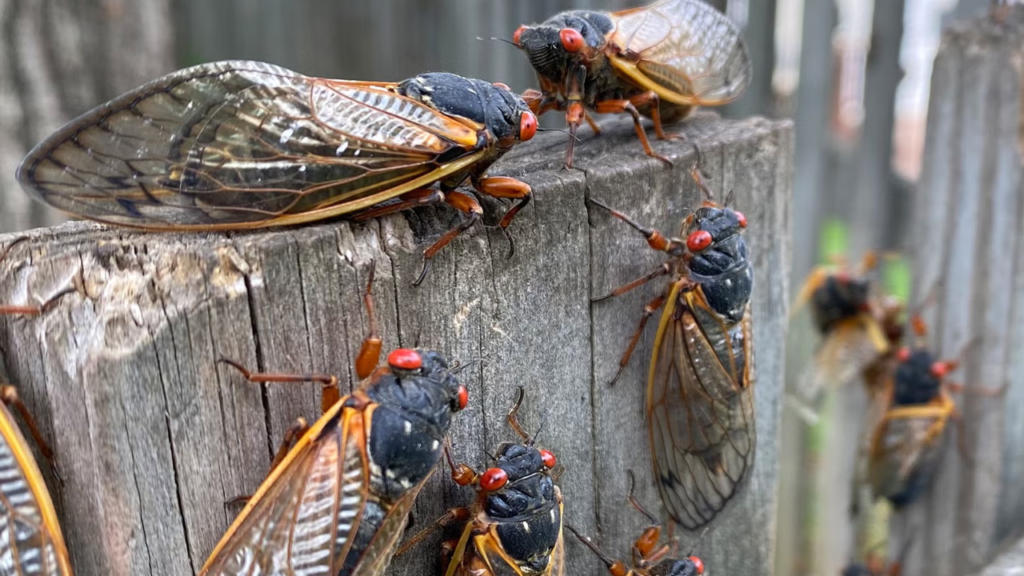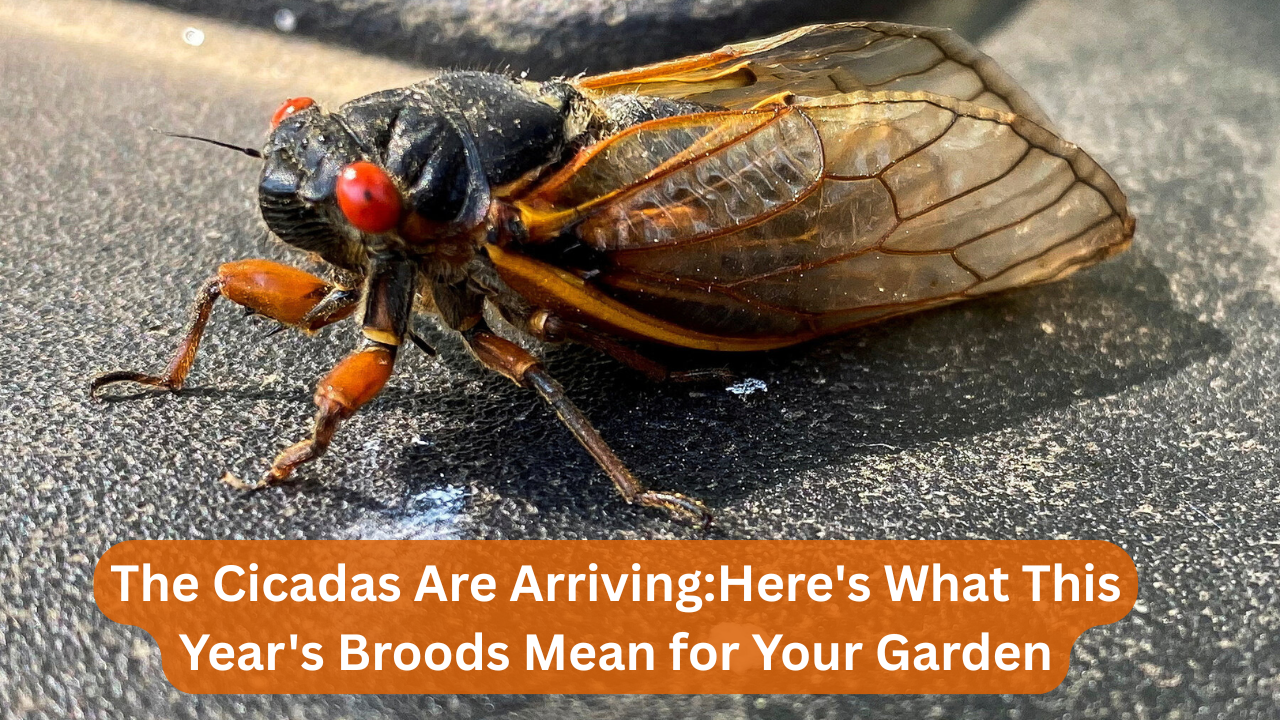In 2025, the buzzing sound of cicadas will fill the air as Brood XIV emerges from the earth after 17 years of dormancy. Known for their synchronized appearance every 17 years, these periodical cicadas will surface from late April to early June, depending on local conditions. While the sight and sound of millions of these insects may seem alarming, understanding their impact on your garden and taking preventive measures can help minimize any potential damage.
What Are Periodical Cicadas?
Cicadas are known for their distinctive, loud buzzing calls, but not all of them are created equal. Periodical cicadas, such as Brood XIV, follow a unique life cycle. The nymphs spend the majority of their lives underground, feeding on the roots of trees. After 17 years, they emerge, molt into adults, mate, and then lay their eggs before dying. This phenomenon is called a “brood,” and each one appears on a set schedule. Brood XIV, which spans parts of the eastern United States, will be one of the more populous broods of 2025.
According to the U.S. Department of Agriculture (USDA), cicadas are not harmful to established trees and plants but can cause temporary stress to younger or newly planted ones, especially during their egg-laying phase. To learn more about cicada cycles, visit the USDA’s National Insect Information page.
The Impact on Your Garden
Though cicadas themselves are not known for causing significant damage to gardens, their reproductive behavior can have consequences.
Egg-Laying Damage: “Flagging”
One of the most noticeable impacts cicadas have on your garden is their egg-laying behavior. Female cicadas lay their eggs in small twigs, which causes the tips of these twigs to die off. This phenomenon, known as “flagging,” is not typically harmful to mature trees but can affect younger plants or newly planted shrubs. While the appearance of these dead twigs can be unsightly, the damage is often minimal if the plants are well-established.
For more information on plant protection, the University of Maryland’s Extension office provides detailed guides on caring for plants during cicada season.
Root Feeding Stress
Cicada nymphs feed on the roots of trees while underground, but this behavior rarely causes lasting damage to established plants. However, young trees and shrubs may experience some root stress, as the feeding can weaken their overall health. If you’re concerned about young trees, consider additional care measures or temporary protections during this time.
Soil Enrichment
While cicadas’ egg-laying may cause temporary harm to your plants, there is an unexpected upside to their emergence. Once adult cicadas die, their decomposing bodies contribute nutrients to the soil. This natural recycling process enriches the soil, providing a boost of organic matter that can benefit your garden in the long term.
To learn more about how cicadas contribute to local ecosystems, visit the EPA’s page on Cicada Ecosystem Roles.

Protective Measures for Your Garden
To safeguard your garden from potential damage, there are several steps you can take. The following recommendations can help protect young trees and plants during the cicada invasion.
1. Protect Young Trees with Netting
If you have newly planted or young trees, wrapping their trunks with fine mesh or netting can help keep cicadas away from the vulnerable twigs where they lay eggs. Fine mesh or garden netting with openings no larger than half an inch will prevent the females from laying eggs on the branches. Be sure to remove the netting after cicada season to avoid any harm to the trees.
The University of Kentucky’s Extension Office has resources on how to properly secure tree netting.
2. Delay Planting
If you were planning to plant new trees or shrubs in the coming months, it may be best to delay your planting until after the cicada emergence. Newly planted trees are more likely to be affected by cicada egg-laying, so waiting until the season has passed will reduce the risk of damage.
3. Use Traps to Control Populations
While it’s impossible to stop a cicada emergence, you can use traps to control the population around your garden. Sticky traps or adhesive bands can be placed around the trunks of trees to capture emerging cicadas. Though this won’t eliminate them entirely, it may help reduce the number of cicadas in close proximity to your plants.
4. Seal Entrances to Prevent Cicadas from Entering Your Home
Cicadas can find their way into homes through open windows and doors. While this won’t directly affect your garden, it’s a good idea to seal potential entry points to avoid having them invade your living space. Use mesh screens and ensure windows and doors remain shut during peak cicada activity.
The U.S. Department of Health and Human Services’ CDC page on Cicadas provides practical advice for managing cicada-related issues indoors.
Ecological Benefits of Cicadas
Despite their potential to damage young plants, cicadas play a crucial role in the ecosystem. Their mass emergence provides food for many wildlife species. Birds, mammals, and even other insects rely on cicadas as a protein-rich food source. Furthermore, the burrows that cicadas create underground help aerate the soil, improving its structure and allowing water and nutrients to flow more easily to plant roots.
Additionally, the egg-laying process can lead to a natural pruning of trees, which may promote healthier growth in the long term. As cicadas decompose, their bodies also add organic matter to the soil, enriching the environment for future plants.
Long-Term Outlook
Once cicadas have completed their reproductive cycle, they will die off, and their decomposing bodies will enrich the soil with valuable nutrients. The next appearance of Brood XIV will be in 2041, so the impact on your garden will be minimal after this season.
In the meantime, taking proactive steps to protect your plants and understanding the ecological role of cicadas will allow you to navigate this natural event without significant disruption.
Final Thoughts
The arrival of Brood XIV cicadas may cause some temporary damage to young plants, but their impact on mature gardens is minimal. While they lay eggs and feed on roots, they also enrich the soil and provide food for wildlife. By taking simple protective measures like wrapping trees and delaying planting, gardeners can safeguard their plants. After their brief emergence, cicadas leave behind a healthier, more fertile garden, reminding us of the wonders of nature and its cycles.

Pankaj Kumar is a skilled content writer at OTE News, focusing on breaking news, technology, and socio-political developments. With a background in Mass Communication, he brings a balanced perspective to his articles, ensuring clarity and reliability. Pankaj has a knack for simplifying complex topics for readers.
In his free time, he enjoys photography, traveling, and experimenting with new cuisines. His curiosity and dedication to truthful reporting make him a valuable contributor to OTE News.




